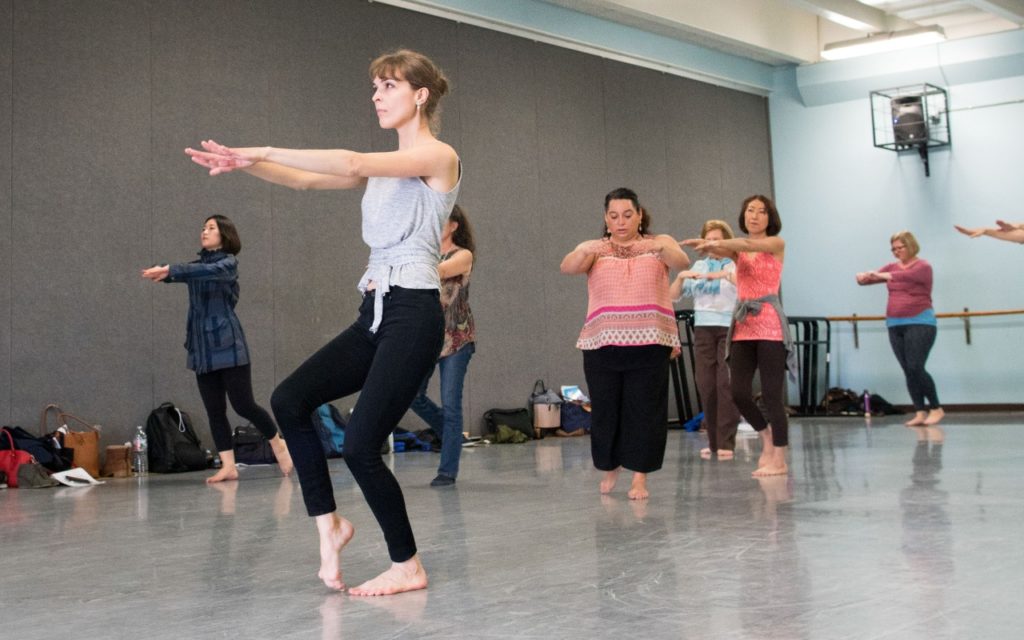
Plastique Animée: The Importance of the Embodiment of Musical Expression and Communication
This essay considers the benefits of approaching musical expression and performance using the mindset and practices of a plastician, and how this can provide insight for instrumentalists, audiences, and music students. A personal account of the author’s first hand experience of performing Plastique Animée, it discusses the process and enlightenment from the point of view of a string chamber player, and how embodying music can allow for growth in terms of analysis, appreciation, and understanding. There should be a place for Plastique as an art form in itself within the creative arts world, as well as it providing a training platform for professionals or amateurs from numerous fields interested in the art of communication, and expression using alternative methods. A deeper level of expressivity may be found through the embodiment of music and art.
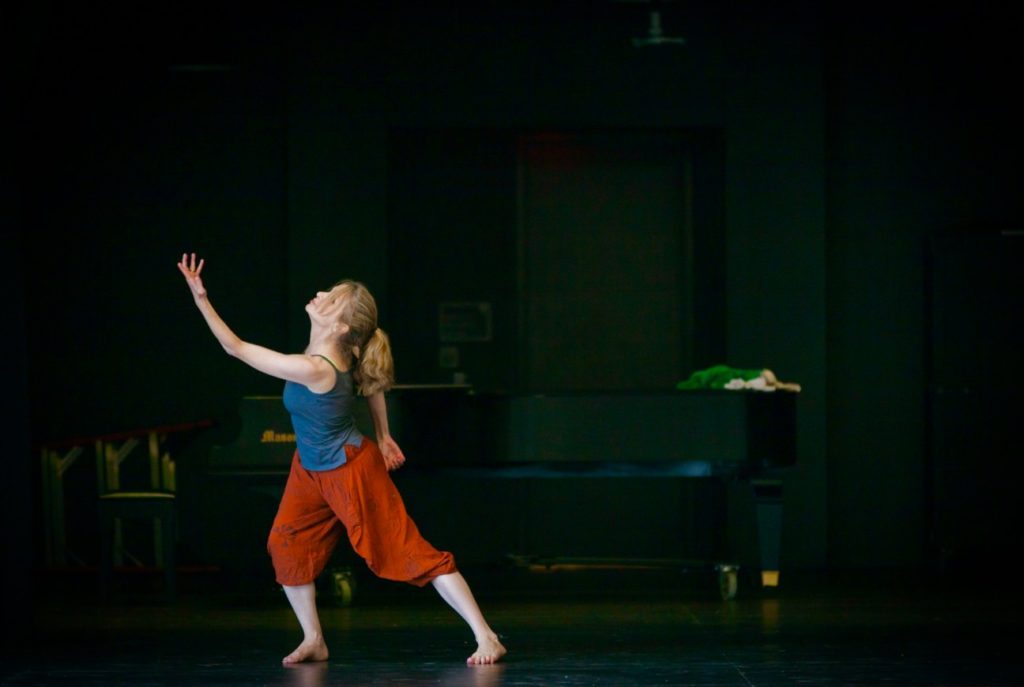
Personal Context
The performance which inspired this article is a Plastique Animée performance of the third movement of Shostakovich’s String Quartet No. 8 in C minor, Op. 110, which formed part of my practical assessment for the Dalcroze Certificate. As part of the MA in Music Psychology I have recently completed, I had to consider musical expression in performance, which prompted me to evaluate my own Plastique experience, as well as examining the process and concept in detail. I will discuss the expression of the performance from the stance of an experienced string player and an amateur plastician, as I was in 2008 when the performance took place.
The ensemble consisted of two first study violinists, one violist, and myself (a cellist). Therefore, the piece we chose was familiar to us in terms of string quartet repertoire, although none of us had performed the piece previously meaning we had no preconceived strong feelings regarding interpretation. We had, however, performed together as a string quartet on numerous occasions so had formed working musical and social relationships. In addition to this, we spent many months in eurhythmics classes together. With the ensemble and repertoire confirmed, we embarked on our journey of attempting to fully embody the music in a performance of moving plastic.
The Embodiment of Music for Education, Expression, and Performance
Jaques-Dalcroze recreated a distinct performing art, where music and movement meld to become one, an art that expresses the human spirit in time, through space and with force. This art is what Jaques-Dalcroze called Plastique Animée.
Institute for Jaques-Dalcroze Education
Jaques-Dalcroze was teaching at the Geneva Conservatoire at the end of the 19th century when he realized that in general, music teaching was dry and disconnected from the art and experience of music making itself. In his students, he noticed that despite lacking understanding of certain theoretical concepts or technical ability, they all engaged with music on a primitive and physical level through foot tapping and other bodily responses. This provoked him to “think of a musical education in which the whole body would play the role of intermediary between sounds and thought, so becoming an expressive instrument” (Dutoit 1965 as quoted in Davidson 2021, 188). Eurhythmics was developed as a result of this epiphany, and I feel it relevant to note that the word rhythm came to English from the Greek ‘rhythmos’ (meaning ‘river in flow’), ‘eurhythmics’ therefore meaning ‘good flow’ (Daly 2022, 106; Davidson 202, 190). This is of note because the concept of motion in music is something that has been heavily discussed (e.g. Eitan and Granot 2006; Repp 1993; Shove and Repp 1995), and having studied eurhythmics, I feel certain that motion is evident in music. It is only in western cultures that music and dance have become so far removed from each other as to create two disparate art forms which I shall discuss later. In the Dalcroze approach, learning is experiential, and both mind and body are engaged harmoniously. In the words of Daly (2022, 106) “the rhythmics class includes exercises that develop motor and social skills, musical, physical and spatial awareness through movement and quick response, always drawing on the students’ own sense of creativity and self-discovery”, the importance of which will hopefully become increasingly apparent throughout this article.
In my first eurhythmics lessons (2006), through experiencing the most basic level of exercises which can and should be accessed even by very young children (for example ‘stepping the beat’), I discovered that in approaching musical understanding holistically, the exercise transforms from simply ‘stepping the beat’ into something far more intricate. As Farber and Parker point out (1987, 44), in a Dalcrozian interpretation all musical elements should be approached mindfully, with consideration given to nuance such as accent, energy, and weight distribution, demonstrating a true physical representation of what can be heard. Even in what appears to be the most basic of eurhythmics exercises, the whole body experiential approach truly made me feel empowered as a musician. Despite already being able to enact feats such as beat keeping, I was encouraged to listen more intelligently, deeply, and humanly; drawing on my own personal emotional musical and physical experiences to convey what I could hear in the music. The familiar temporal and physical joys of dancing were present, but I felt even more connected to both the music and myself. These early steps laid the foundations for the embodied performance of the Shostakovich which would take place towards the end of my studies.
I mentioned earlier the disconnection between music and dancing in the western world and I shall expand briefly on that now whilst considering the relationship between eurhythmics and dance. Indeed there was a controversial reception of Dalcroze’s approach by dancers of the time. Whilst some shared a similar artistic ethos to Dalcroze, the same artists viewed eurhythmics specifically as an overly rigid approach to music and movement. Eurhythmics did nonetheless impact greatly on the development of modern dance (Dale 2017). Dance visualisation was used as a training tool in teaching dance to build a movement vocabulary rather than for dance performance per se, much as rhythmics exercises belong primarily in the studio for the development of musical skills and not on the stage. Dancers refer to the direct portrayal of musical aspects in movement as “mickey mousing” (Greenhead 2009, 37; Dale 2017), which is neither the art of choreography nor the desired outcome of a Plastique Animée. Rather, plasticians aim to fully embody subtle nuances that may be missed by the lesser trained ears of dancers, although their movement technique may not be as aesthetically pleasing as their graceful movement centric counterparts. Musicians, dancers, and indeed actors who all share requirements for some expertise in movement, interpretation, and expression, can develop and explore different domain specific yet similarly aligned skills through rhythmics training (Dale 2017; Davidson 2021, 191-192; Greenhead 2009, 37-38; Rothstein 1995).
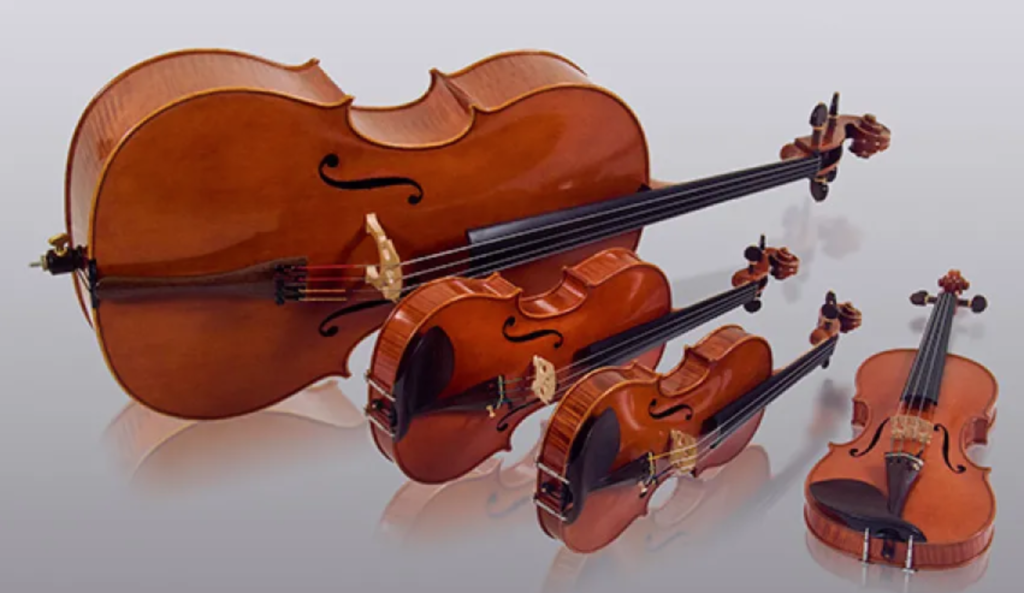
During the development of our Shostakovich performance, we found that some aspects of our newly discovered roles as plasticians rather than string players we adapted well to, most likely due to our rhythmics training. Conveying emotional elements in movement was one of the things which I personally found less challenging. Starting in bar 44 of the third movement (Shostakovich 1961) there is a section which we interpreted as an uncomfortable and tense relationship between the scored parts. Importantly, the performance direction is “espressivo”. To us, the cello melody appeared to express confinement, and our movement reflected this. My movements in the ensemble embodied this part, and I writhed for freedom from within a forceful mobile cage formed by the others, not remotely indicative of the exact harmonic lines or rhythmic emphasis in the music. Instead, we focused on portraying the sense of unease and conflict we felt should be conveyed on an emotional and expressive level. The performance was far from “mickey-mousing”, as it did not specifically follow temporal cues or accents, nor did we try to mimic each part individually – it was a visual representation of the emotive understanding we collectively formed of the section of music. As a group, this was unanimously decided upon, I think because it was something we could directly lift from our experience as chamber string players and human beings – we would have wanted to demonstrate this expressive quality if we were playing the piece, but would have employed specific technical adjustments to do so including bow speed and placement, vibrato, blend, and dynamics. However, other elements that we would otherwise not be concerned with as soloists or ensemble instrumentalists such as positioning on the stage became something we now had to consider carefully to clearly express our interpretation of the piece physically.
Plastique Animée proves to be a truly cross-modal and multi-sensory phenomenon – consideration of lines and placement on the stage is usually only relevant to directors of performances such as opera and plays, whereas in devising a Plastique performance the lines and spaces created on stage should visually enhance and complement the music. This for me, was a hugely enjoyable challenge and sparked many interesting discussions. Should we position ourselves in relation to each other according to the harmonic construction of the music (close together or far apart if we were to literally represent the intervallic relationships between parts)? How will it change the understanding or interpretation of an audience member if we position the “melody” centre stage and front as might be expected, compared to placing what would traditionally be considered the forefront of the music towards the back, or off centre? Should we, and if so, how much, challenge expectations to create new and interesting perspectives? The way that visual and audio receptors and engagement mechanisms work within our bodies is worth considering at this point.
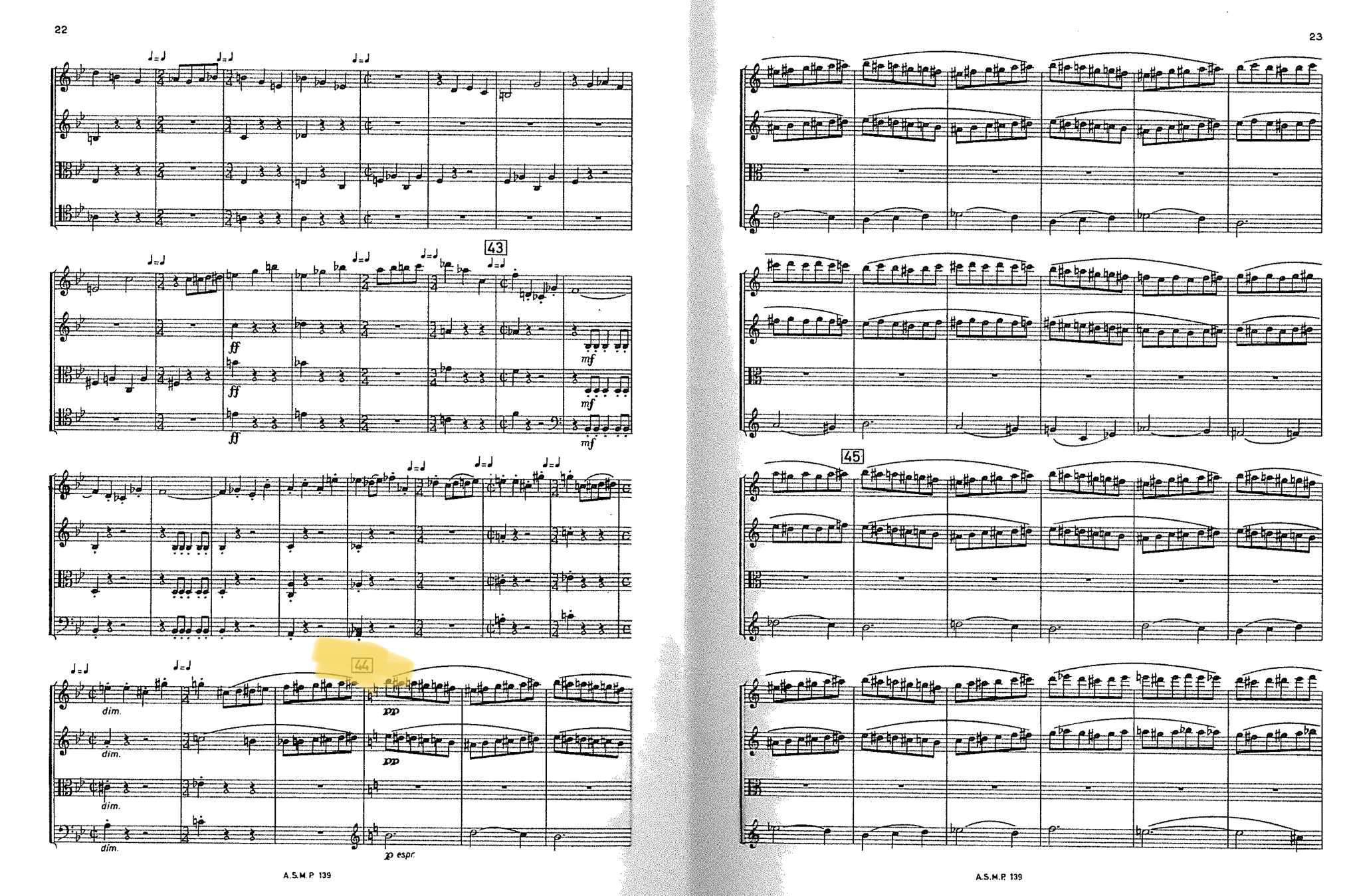
Entrainment can be described as a phenomenon whereby two or more rhythmic entities are synchronised to an element of measured time, with evidence of cyclical or oscillatory patterns (Clayton 2012, 49-50; Clayton et al. 2005, 5-7; Merker et al. 2009, 4; Phillips-Silver et al. 2010; Phillips-Silver and Keller 2012, 1). When discussing entrainment as it appears in musical contexts it is more commonly called “musical rhythmic entrainment” (Merker et al. 2009, 4), e.g. ensembles maintaining a joint tempo and temporal fluctuations, or tapping along to the beat of music, although it can also be witnessed in more day to day situations and is also found in nature (e.g. fireflies flashing in synchrony (Neda et al. 2000, 849)). There is support for the notion that when audio and visual channels are presented simultaneously, more accurate synchrony can be achieved, whether or not this is desired. In addition to this, whilst humans are able to entrain to visual stimuli, the introduction of an audio stimulus will override the visual mechanisms (Fendrich and Corballis 2003, 161; Recanzone 2003; Repp and Penel 2004; Morein-Zamir et al. 2003). A prime example of how multi-modal signals can produce an enhanced impact is in the case of the study of an Indian Classical ensemble when synchronicity was not required for the performance, yet when performers could see each other clearly there was more chance of accidental synchronisation (Clayton 2007).
The whole body experiential approach develops the practitioner’s skills including motor control, aural analysis, and expressivity of touch. This can then be applied to technical instrumental practice (Daly 2022, 110-111; Greenhead 2016), interpretation of scores, and critical engagement. Jaques-Dalcroze himself emphasised the importance of the experiential process stating that “the aim of eurhythmics is to enable pupils, at the end of their course, to say, not “I know”, but “I have experienced”, and so to create in them the desire to express themselves” (1967, 63). When a student has experienced sufficiently, they may display their mastery via a performance of Plastique Animée. Stevenson (2016, 12) writes of Plastique that “learner becomes performer, and analysis becomes art”. This brings me to discuss how composer, analyst, performer, and audience, may perceive or experience expression.
Composer, Performer, and Audience: Approaching and Understanding Musical Expression
Expression is by its very nature a form of communication, and I think that considering Kendall and Carterette’s model of musical communication (1990, 132) is useful for understanding expressivity in music. The model includes the roles and relationships of the composer, the performer, and the listener, as well as identifying whether the primary form of communication is notated or acoustic. A similar approach is taken by Fabian and Schubert (2014, 284-288) who discuss performances as having a ‘compositional’ and ‘performer’ layer, seeing that audiences will respond to absolute elements of the music (such as a melody), and be impacted by the personal influence of a performer e.g. sound production and subtle temporal changes. Schmalfeldt recognises the differences between the preoccupation with temporal and structural elements in music by analysts and the dramatic interpretation of the performer (1985, in Clarke 1995, 25). Lester (1995, 198) claims that a “more reciprocal discourse [between analysts and performers] would enhance our understanding of music-theoretical issues as well as performance issues”, and Rothstein (1995, 238) rightly states that musical performance is not an “explication du texte”. The study of eurhythmics and specifically Plastique, could bridge this gap between different areas of musical interpretation.
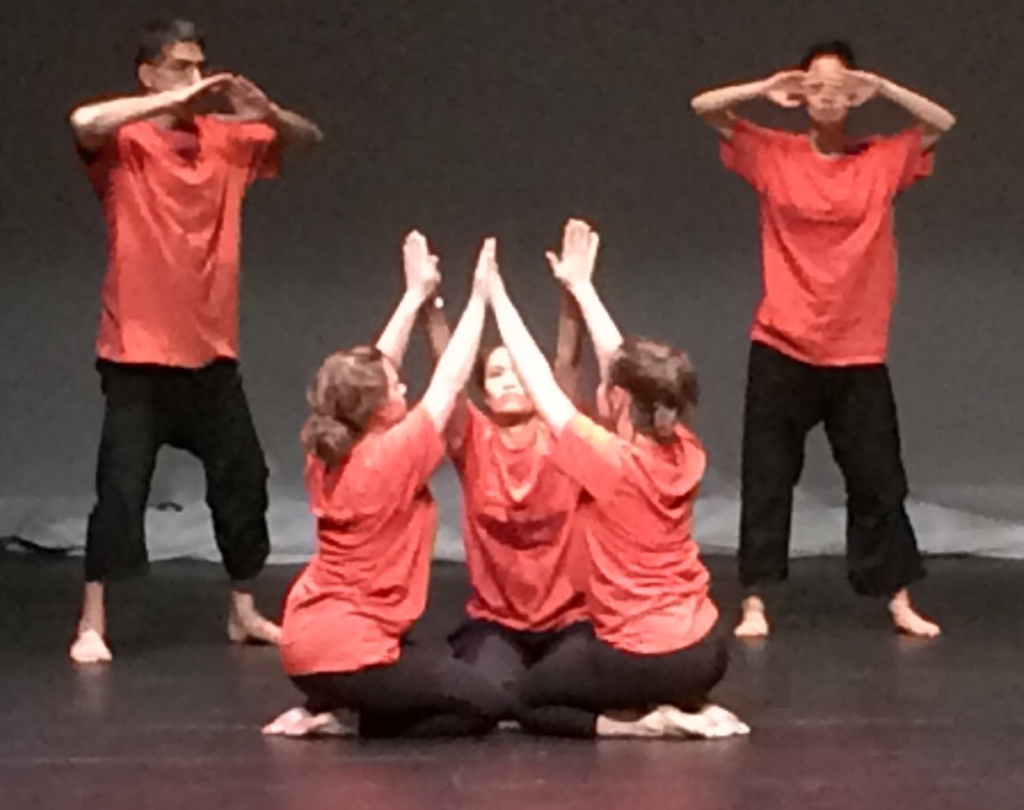
As both music and dance are expressive performance arts, it makes sense for practitioners to learn from alternative disciplines. Krumhansl and Schenck (1997), found that an audience was able to interpret the same expressive qualities from a music only and a dance only version of a performance. When presented with both audio and visual recordings, the expressive impact was enhanced suggesting that communication is more effective when experienced cross-modally, as previously discussed regarding entrainment. Other studies which have examined how visual cues provided by performers can affect an audience’s interpretation (Thompson et al. 2008; Thompson et al. 2010), and how expressive intention can be identified from the sight of musicians performing without sound (Shoda & Adachi 2016; Vines et al. 2006), appear to verify that whilst Plastique Animée is not currently a popular art form in itself, there is certainly an argument for combining visual and audio performances to create a more in depth and holistic artistic experience for both the performer and audience. Fulford et al. (2011, 456 – 457) discuss the importance of visual cues amongst musicians who have hearing impairments, and I feel that Plastique performance is one way, therefore, which could make live musical performances more accessible to the deaf and hearing impaired community. I felt this strongly whilst conceiving the movement for our Plastique, and also when observing the workings and results of other groups in my cohort. It made me perceive the music differently, and familiar pieces were enjoyed from a new and interesting perspective thanks to the additional visual and physical content.
Learning, performing, and analysing the music as plasticians was a novel and exciting experience for all of us in the Plastique ensemble. I felt liberated and free from the pressures of producing the high quality, technically competent musical performance that would have been expected of me in my usual role as a cellist, and was able instead, to focus on building the narrative of Shostakovich’s music. The instrumental performer may personalise a piece where appropriate through bowings, articulation, changes in dynamics, control of rubato, and fingerings, however, there is always an expectation from the audience that they will hear the piece performed live in some recognisable way. There may be a controversial tempo or a particularly divine approach to vibrato, but being slaves to the score (notated “composer layer” of expression) means few shocking surprises are likely to occur. In developing the choreo-musical structure of the Plastique, we were able to connect with the audience on a completely different level.
Whilst some performers are mostly concerned with expressing the structure of a piece (Rothstein 1995, 218) and others hold “stylishness” in greater esteem (Kendall and Carterette 1990, 130-131), I have veered towards a more instinctive and intuitive approach to interpretation as a performer. The musical analyst in me is much more attracted to focusing on social and historical elements than structure, which is why Shostakovich has always been of particular interest to me. At the point of writing the 8th String Quartet, he had recently endured some difficult life events including the continued political turmoil he endured throughout his life as a composer of the Soviet era, and contracting polio, which to me, makes the work even more appealing on a human level. It is not possible to ever know the true ‘meaning’ of the Quartet, because music lacks semantic specificity, and there may be hidden or false messages included to account for the rigorous censorship imposed by the Soviet Union at that time. Despite these uncertainties, or maybe because of them, it was delightful to investigate, analyse, and present such an interesting piece in a transformative and expressive way.
A Place for Plastique
Having understood how the practice of Plastique Animée has contributed to my personal growth, and having investigated the potential channels it may open to music students, educators, performers, and audiences, I believe that it should be considered an important and useful expressive tool in the modern day performance art and education.
In his 1990 article, Webster urges us to consider re-branding ‘“creativity” in music education as “creative thinking” (22) to draw attention away from the product of musical learning and more towards the process itself. Twenty-five years later when he revisited the issues addressed in the original publication (Webster 2016), he noted that some progress had been made in general towards a more constructivist approach to music education, and also recognised the obvious development in technologies available to teachers and students. Teaching using the Dalcroze principles or taking constructivist approaches from it, is something that is worthwhile for the compilation of a music or arts curriculum. No longer new as a teaching approach, Dalcrozian principles are still deemed to be revolutionary and sought after by arts teachers. Once I had experienced first hand the joy and depth of learning which eurhythmics afforded me, I could not fathom any other way of teaching and learning for my own students.
I maintain that it would have been hugely interesting to have either the performers or another onlooker, to compose music based on our Plastique performance, subsequently comparing the new pieces inspired by the personal physical interpretation of Shostakovich’s work in movement, with the original String Quartet in question. This would create links, and levels of interpretation and expressivity beyond usual performance and composition conventions. Introducing such a technique to be used for expression, composition, performance, and analysis to music students allows for freedom and autonomy, developing confidence and understanding simultaneously. In the 21st century, students might alternatively use acoustic or digital composition techniques to interpret movement into sound. Eurhythmics and Plastique could be valuable teaching tools in a holistic approach to using music technology. Imagine for example, a digitally created Plastique – it would be a multi-modal approach to musical analysis and understanding, provided the purely physical approach was adopted first so as not to miss the point of experiential embodiment. After all, we can present ourselves through avatars in virtual worlds now, so why not express other human instincts virtually in an ever-changing world too?
Mindfulness has become a topic of great interest in recent years (McCaw 2020) as individuals and communities across the globe reflect on their socio-economical pasts and present, navigate financial crises, and in some cases continue to battle with the effects of the COVID-19 pandemic. Krumhansl informs us that the primary reason for listening to music is for “emotional effect” (2002, 45), indicating to me that listening to music as well as producing it is an expressive phenomenon. During a live performance, some movements and expressive gestures are for audience gain and some are for technical purposes (Clarke 1993, 216), but it is ultimately a basic human experience for performer and listener (audiences can tell an expressive vs non expressive or deadpan performance). I truly believe that a holistic approach, and the embodiment of music is a mindful experience providing an outlet for expression. I certainly found the process and performance of Plastique Animée a deeply spiritual one. Through discussions with peers, observations of students’ development, and reading about the experiences of others (Habron and Van der Mewe 2020, 125-139), it is clear that I am not alone in feeling this way. Monsieur. Jaques I’m sure, would be very pleased to hear that, “I have experienced”.
References
- Clarke, Eric F. 1993. “Generativity, Mimesis and the Human Body in Music Performance.”
Contemporary Music Review, no. 9: 207-219. https://doi.org/10.1080/07494469300640451 - Clarke, Eric F. 1995. ”Expression in Performance: Generativity, Perception and Semiosis”. In
The Practice of Performance: Studies in Musical Interpretation, edited by John Rink, 21-54. Cambridge: Cambridge University Press. - Clayton, Martin. 2012. “What is Entrainment? Definition and Applications in Musical Research.” Empirical Musicology Review, no.7: 49–56. https://doi.org/10.18061/1811/52979
- Clayton, Martin R. L. “Observing Entrainment in Music Performance: Video-Based Observational Analysis of Indian Musicians’ Tanpura Playing and Beat Marking.” Musicae Scientiae, no. 11: 27–59, https://doi.org/10.1177/102986490701100102
- Clayton, Martin, Sager, Rebecca, and Will, Udo. 2005. “In Time With the Music: The Concept of Entrainment and Its Significance for Ethnomusicology.” In European Meetings in Ethnomusicology, no.11: 1-82.
- Dalcroze, Emile J. 1967. Rhythm, Music & Education. Woking, Surrey: Dalcroze Society.
- Dale, Monica. 2017. “American Modern Dance, Music Visualizations and Plastique Animée.” MusiKinesis, November. https://www.musikinesis.com/article-in-le-rythme/
- Daly, Diane K. 2022. “Creativity, Autonomy and Dalcroze Eurhythmics: An Arts Practice Exploration.” International Journal of Music Education, no. 40: 105-117. https://doi.org/10.1177/02557614211028600
- Davidson, Andrew. 2021. “Konstantin Stanislavski and Emile Jaques-Dalcroze: Historical and Pedagogical Connections Between Actor Training and Music Education.”
- Stanislavski Studies, no. 9: 185-203. https://doi-org.sheffield.idm.oclc.org/10.1080/20567790.2021.1945811
- Eitan, Zohar, and Granot, Roni Y. 2006. “How Music Moves.” Music perception, no. 23: 221–248. https://doi.org/10.1525/mp.2006.23.3.221
- Fabian, Dorottya, and Schubert, Emery. 2014. “A Taxonomy of Listeners’ Judgements on Expressiveness”. In Empirical Approaches Across Styles and Cultures of Music Performance, edited by Dorottya Fabian, Renee Timmers, and Emery Schubert, 283-303. Oxford: Oxford University Press.
- Farber, Anne, and Parker, Lisa. 1987. “Discovering Music through Dalcroze Eurhythmics.” Music Educators Journal, no. 74 (3): 43-45. https://doi.org/10.2307/3397940
- Fendrich, Robert, and Corballis, Paul M. 2001. “The Temporal Cross-Capture of Audition and Vision.” Perception & Psychophysics, no. 63: 719–725.
https://doi.org/10.3758/BF03194432 - Fulford, Robert, Ginsborg, Jane, and Goldbart, Juliet. 2011. “Learning Not to Listen: The Experiences of Musicians with Hearing Impairments.” Music Education Research, no. 13 (4): 429-446.
- Greenhead, Karin. 2009. “Plastique Animée: Yesterday, Today and Tomorrow…?.” Le Rythme, 2009: 37- 40.
- Greenhead, Karin. 2016. “Becoming Music: Reflections on Transformative Experience and the Development of Agency Through Dynamic Rehearsal.” Arts and Humanities as Higher Education, no. 15. https://www.researchgate.net/publication/303857391_Plastique_Animee_yesterday_to
day_and_tomorrow - Habron, John, and Van der Merwe, Liesl. 2020. “Stories Students Tell About Their Lived Experiences of Spirituality in the Dalcroze Class.” British Journal of Music Education, no. 37: 125-139. http://doi-org.sheffield.idm.oclc.org/10.1017/S0265051720000091
- Institute for Jaque-Dalcroze Education. (n.d.). Plastique animée. http://jdalcroze.com/plastique-anim%C3%A8e
- Kendall, Roger A., and Carterette, Edward C. 1990. “The Communication of Musical Expression.” Music Perception, no. 8: 129-163. https://doi.org/10.2307/40285493
- Krumhansl, Carl L. 2002. “Music: A Link Between Cognition and Emotion.” Current Directions in Psychological Science: A Journal of the American Psychological Society, no. 11: 45–50. https://doi.org/10.1111/1467-8721.00165
- Krumhansl, Carl L., and Schenck, D. L. 1997. “Can Dance Reflect the Structural and Expressive Qualities of Music? A Perceptual Experiment on Balanchine’s Choreography of Mozart’s Divertimento no. 15.” Musicae Scientiae, no. 1 (Spring): 63-85.
- McCaw, Christopher T. 2020. “Mindfulness ‘Thick’ and ‘Thin’ – A Critical Review of the Uses of Mindfulness in Education.” Oxford Review of Education, no. 46: 257-278. http://doi.org/10.1080/03054985.2019.1667759
- Merker, Bjorn H., Madison, Guy S., and Eckerdal, Patricia. 2009. “On the Role and Origin of Isochrony in Human Rhythmic Entrainment.” Cortex, no. 45: 4–17, https://doi.org/10.1016/j.cortex.2008.06.011.
- Morein-Zamir, Sharon, Soto-Faraco, Salvador, and Kingstone, Alan. 2003. “Auditory Capture of Vision: Examining Temporal Ventriloquism.” Cognitive Brain Research, no. 17: 154–163. https://doi.org/10.1016/S0926-6410(03)00089-2
- Neda, Z., Ravasz, E., Brechet, Y., Vicsek, T., & Barabasi, A. L. 2000. “The Sound of Many Hands Clapping.” Nature, no. 403: 849–850. https://doi.org/10.1038/35002660
- Phillips-Silver, Jessica, and Keller, Peter E. 2012. “Searching for the Roots of Entrainment and Joint Action in Early Musical Interactions.” Frontiers in Human Neuroscience, no. 6: 1-11. https://doi.org/10.3389/fnhum.2012.00026
- Recanzone, Greg H. 2003. “Auditory Influences on Visual Temporal Rate Perception.” Journal of Neurophysiology, no. 89: 1078–1093. https://doi.org/10.1152/jn.00706.2002
- Repp, Bruno H., and Penel, Amandine. 2004. “Rhythmic Movement is Attracted More Strongly to Auditory than to Visual Rhythms.” Psychological Research, no. 68: 252–270.
- Repp, Bruno H. 1993. “Music as Motion: A Synopsis of Alexander Truslit’s (1938) Gestaltung und Bewegung in der Musik.” Psychology of Music, no. 21: 48-72. https://doi.org/10.1177/030573569302100104
- Rothstein, William. 1995. “Analysis and the Act of Performance.” In The Practice of Performance: Studies in Musical Interpretation, edited by John Rink, 217-240. Cambridge: Cambridge University Press. https://doi.org/10.1017/CBO9780511552366.011
- Shoda, Haruka, and Adachi, Mayumi. 2016. “Expressivity, Affective Nuance, and Presentation Modality in a Performer-to-Audience Communication.” Psychomusicology: Music, Mind, and Brain, no. 26: 167-178. https://doi.org/10.1037/pmu0000141
- Shostakovich, Dmitri D. 1961. String quartet 8: Op. 110 [Music score]. Anglo-Soviet Music Press: Boosey & Hawkes.
- Shove, Patrick, and Repp, Bruno. 1995. “Musical Motion and Performance: Theoretical and Empirical Perspectives.” In The Practice of Performance: Studies in Musical Interpretation, edited by John Rink, 55-83. Cambridge: Cambridge University Press. https://doi.org/10.1017/CBO9780511552366.004
- Stevenson, Jack. 2016. “Plastique Animée: Art and Education”. Dalcroze Connections. Fall edition: 10-15. https://issuu.com/dalcrozeusa/docs/dc_01_winter2016_final_efile
- Thompson, William F., Russo, Frank A., and Livingstone, Steven R. 2010. “Facial Expressions of Singers Influence Perceived Pitch Relations.” Psychonomic Bulletin & Review, no.17: 317-322. https://doi.org/10.3758/PBR.17.3.317
- Thompson, William F., Russo, Frank A., and Quinto, Lena. 2008. “Audio-Visual Integration of Emotional Cues in Song.” Cognition and Emotion, no. 22: 1457-1470. https://doi.org/10.1080/02699930701813974
- Vines, Bradley W., Krumhansl, Carl L., Wanderley, Marcelo M., and Levitin, Daniel J. 2006.
“Cross-Modal Interactions in the Perception of Musical Performance.” Cognition, no.101: 80-113. https://doi.org/10.1016/j.cognition.2005.09.003 - Webster, Peter R. 1990. “Creativity as Creative Thinking.” Music Educators Journal, no.76: 22-28. https://doi.org/10.2307/3401073
Find more information about Plastique Animée on our website or let us know what other topics you’d like featured here.